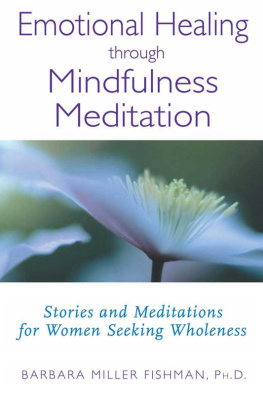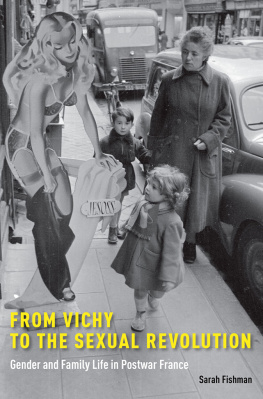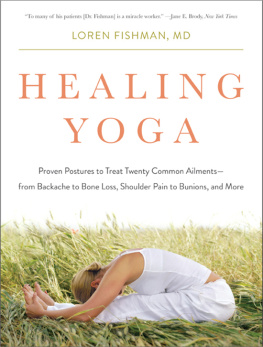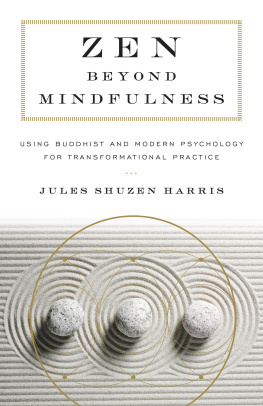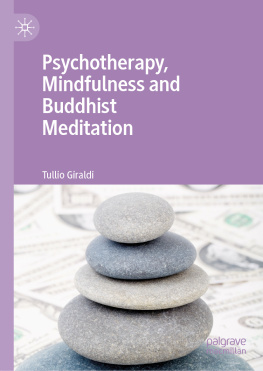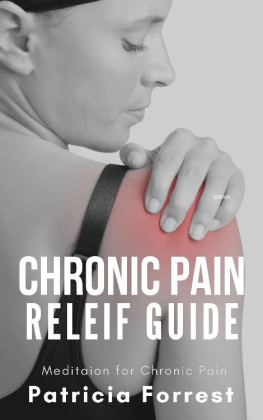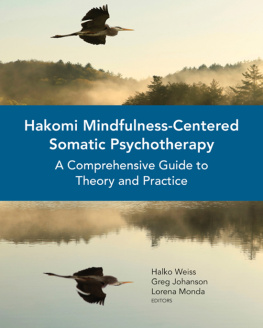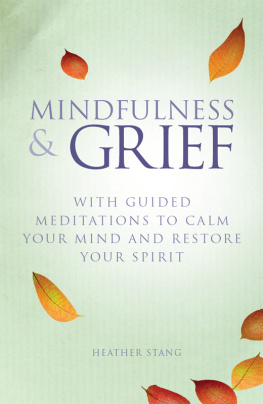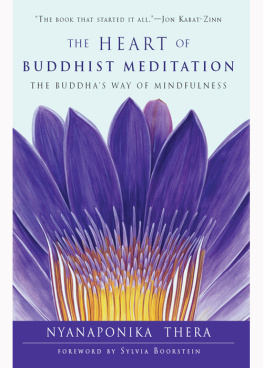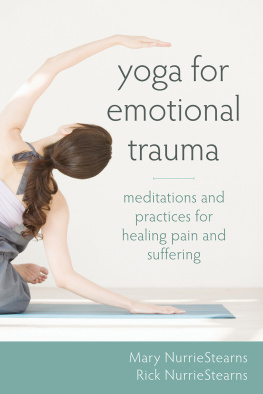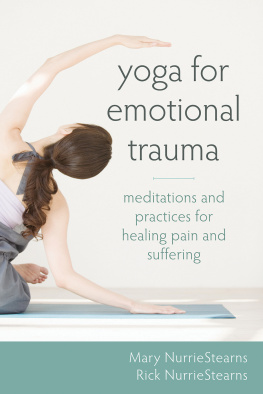Emotional Healing
through
Mindfulness Meditation
Stories and Meditationsfor Women Seeking Wholeness
Barbara Miller Fishman, Ph.D.

Inner Traditions
Rochester, Vermont
I dedicate this book to:
My teacher, Shinzen Young, for the simply stated, complex teachings that led me to discover the subtle unfoldingof a spiritual life;
Alyson Scott, my dear friend, whose penetrating questions and heartfelt support went a long way toward making the birth of this book a reality;
Bob Fishman, my husband, for the gift of a miraculous love that unites us as two solitudes that protect and border and salute each other.
Acknowledgments
I thank the following people for their interest, their readiness to engage, and their support: My three sons and their wives, who read and responded to parts of the manuscript and told me stories about child-rearing that often found their way into the book. Michael Denomme, whose careful and perceptive reading was both supportive and discriminating at the same time. Beth-Ellen Kroope, whose belief in the book came at just the right time. Colleen McCarthy, Judy Erhman, Mary Gregorio, and Ginnie Davidov, who all contributed in the role of readers. Last, Im thankful to Gretchen Wilson and David Key for spending evenings listening to me read.
Contents
Foreword
Its easy to become discouraged when we consider the state of the world, in which violence, injustice, terrorism, and national myopia seem more than ever in ascendance. Yet I find myself strangely optimistic about our global prospects. Below the present surface turbulence, I detect a deep and unprecedented historical movement as yet largely unheralded in the mainstream media. The two most powerful discoveries of all timethe scientific method of the West and the meditative technology of the Easthave finally met and are beginning to interact vigorously. It is my belief that they will mate, giving birth to a generation of strange and powerful tools for the benefaction (and perhaps even salvation) of this world.
The book you have before you has arisen from the initial courtship of these two forces. It tells the stories of eight women who overcame enormous challenges. Although the nature of their challenges differed, the basic procedure that allowed them to transmute emotional pain into life energy was the samea hybrid of Western psychotherapy potentiated with Buddhist mindfulness exercises. By reading their stories you will get a tangible sense of what it means to literally escape into pain, as opposed to escaping from ita truly remarkable notion.
Dr. Barbara Fishman, the author of this book, has been studying Mindfulness Meditation with me for more than fifteen years. Her practice is rigorous and deep. She is part of a growing cadre of psychotherapists who are experimenting with bringing Buddhist mindfulness techniques into the practice of psychotherapy. This work, I believe, represents the first eddy of a tide that will mold the twenty-first century.
SHINZEN YOUNG
DIRECTOR, VIPASSANA SUPPORT INSTITUTE
Preface
Were expecting a major snowstorm as I write these words. Outside, the wind is strangely calm, and the sky is a steely gray. I can feel the tension that comes with an impending storm. Its much like the windrestless and uneasy. A worrisome thought passes through my mind: Will my husband and I be safe as we travel down the length of the Pennsylvania turnpike later in the day? Fortunately, this little mountain home of ours is a warm and cozy place from which to view the danger outside, so I reassure myself about the capacity of our road crews to manage the icy accumulation; I grow quiet inside and continue to write.
Storms also blow through our psyches. Triggered by trouble in the outside world, perhaps a crash in the stock market or the loss of a loved one, inner turmoil can rage as harshly as any blizzard. And the damage done to us, though of a different sort, can be as great as that of any weather disaster. We suffer less if we have a way of sheltering ourselves, a grounding from which to watch the storms.
The motivation to write Emotional Healing through Mindfulness Meditation comes from a lifelong effort to grapple with these internal storms, both in my own life and in those I encounter in my work as a psychotherapist. And the central question has always been, How do we shelter ourselves so that the very protection we need doesnt imprison us within our own defenses, perhaps in the form of a chronic withdrawal or a scowl that threatens harm? Is it possible to feel safe in a way that allows for engaged, open, and loving responses to life?
The wonder is that, at this point in my life, I can answer these questions with a deeply felt Yes! It has taken many years to find that answer, though even now I can lose sight of it for periods of time. But I do know a path that can help me find that yes again. I call it a path toward wholeness, and it makes use of both psychotherapy and meditation to heal the emotions.
Like most of us, Ive tried many ways to shelter myself from tumultuous emotions. My first attempt was to find shelter outside, in the world, through the approval of others and the accumulation of achievements. Both of these felt goodwhen I got them. But neither one protected me from the storms of uncertainty and loneliness that blew through periodically. Not that I want to negate the effort; approval and achievement brought the esteem of others. Its just that the outcome was ultimately disappointing. The storms still came with almost the same intensity.
I tried to find shelter inside, in my own psyche. My first conscious effort to do this was when I tried to read the writings of Sigmund Freud. They piqued my interest, maybe because I was an adolescent and thought they had something to do with sex; however, only the rudiments of his work made any sense at all. Nevertheless, in the years following, I went to school and learned how to think psychologically. And so I grounded myself in an understanding of emotionsmy own and those of others. Even being able to name a personal emotion such as anxiety or sadness helped. Now there was some space between me and my inner turmoil, especially after the emotion faded enough for me to reflect on it.
And I became a psychotherapist, which meant learning more about troublesome emotions right in my own office. I am immensely grateful to those I have worked with over the years; in the best of therapy sessions, both of us gained insight and took steps in our own development.
All the while, life itself taught me to find the shelter that comes with knowing ones way around trouble. Suffering through the emotional turmoil of marital arguments, the loss of parents, and childrens illnesses, I learned to expect trouble, and I learned that it held both pain and opportunity. Even in the midst of a raging internal storm, it became important to stay exposed long enough to identify that opportunity.
Then I began to meditate. Now my search for shelter took another leap. Because I could more carefully watch the thoughts and feelings that were part of my emotions, I was able to hear myself think, Im lonely, or Im angry, and I understood that the verb I am was a problem. Using that verb, I was so fully identified with my turbulent emotions that there was no space between them and me. I was the loneliness. I was the anger. Consciously examining emotions helped me to be separate from themeven when in the midst of painful feelings. Meditation was another, more in-the-moment shelter. It gave me the opportunity to try on other emotions and behaviors. And I used what I learned to help others.
Over years of practice, I also came to understand that meditation was more than a method; it was a way of living very close to all experience. With that understanding came great insights. I watched the way my thoughts and feelings arose, revealed themselves, and then disappeared. I saw both their power and their ever changing, ephemeral nature. Even the boundary between myself and others began to thin as I sensed that we are all experiencing that flow. Sometimes, even in the midst of great turmoil, my mind grew quiet, and I rode the storms much like a great sea bird, high up on top of the winds. Here was the more complete, meditative approach to knowing my troublesome emotionsby being in the midst of the raging storm and outside of it at the same time. As it turned out, when trouble blew in, I needed to find not a storm-resistant shelter but, rather, the stillness that is in the eye of the storm. That stillness was my gateway to a path toward wholeness.
Next page
